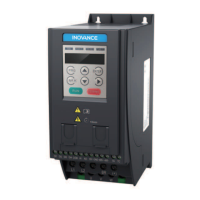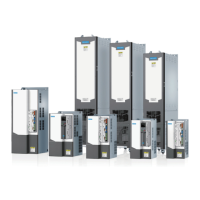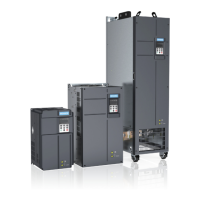Electrical Installation
‑129‑
7.3.4 Requirements on Wiring of the Main Circuit
Requirements on wiring of the main circuit
● Terminals BR, (‑), and (+) are optional. Avoid connecting them to the AC power
supply.
● To protect the main circuit, separate and cover the surface that may come into
contact with the main circuit.
● The control circuit is a safety extra‑low voltage (SELV) circuit, which must be
insulated and isolated from other circuits. Make sure that the control circuit is
connected to the SELV circuit.
● Prevent foreign objects from entering the wiring part of the terminal block.
● Avoid welding when using stranded wires.
● Tightening torque required by terminals may vary. Tighten the screws in
accordance with applicable requirements. Use screwdrivers, ratchets, or wrenches
as appropriate.
● When using an electric tool to tighten the terminal screws, set the tool to a low
speed to avoid damage to the terminal screws.
● Avoid tightening the terminal screws at an angle of greater than 5 degrees. Failure
to comply may result in damage to the terminal screws.
Requirements on power cable selection
Follow national or regional regulations when selecting power cables. Selection of IEC
cables is based on:
● EN 60204‑1 and IEC 60364‑5‑52 standards
● Copper wires with PVC insulation
● 40°C ambient temperature and 70°C cable surface temperature (Note: Contact the
manufacturer if the ambient temperature exceeds 40°C.)
● Symmetrical cable with copper mesh shield
Note
If the recommended cables for peripheral equipment or options are not suitable for the AC
drive, contact Inovance.
Shielded cables must be used to satisfy the EMC requirements. A shielded cable is
either a three‑core cable or a four‑core cable, as shown in the following figure. If the
shield of three‑core cable cannot provide sufficient conductivity, add an independent
PE cable, or use a four‑core cable that contains a PE core. To suppress radio
frequency interference effectively, use coaxial copper braid as the shielding layer of
cable. The braided density of cooper braid should be greater than 90% to enhance
the shielding efficiency and conductivity.

